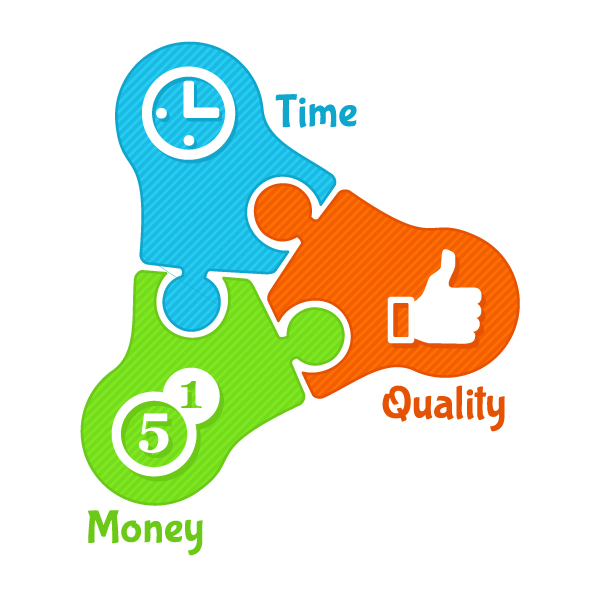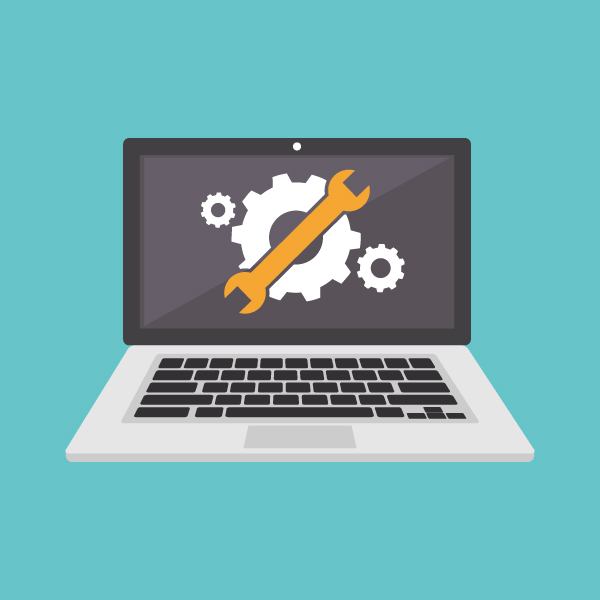Embracing SaaS in the Public Sector
The Future of Government Technology Lives on the Cloud
Over the past decade, the business world has dramatically shifted toward Software-as-a-Service (SaaS). In the public sector, the SaaS wave is just beginning. Prior to that shift, companies spent valuable resources building and maintaining support systems for functions such as payroll, accounting and data management that were quickly out of date and kept them from focusing on their core mission.
What is Software-as-a-Service (SaaS)?
Software-as-a-Service (Saas) is the cutting-edge, low-risk trend in technology that enables users to access data from any device with a browser and internet connection. Billed on a subscription basis, entities are given licenses to use modern software while the vendor hosts, maintains, and upgrades it remotely. While this may seem like uncharted territory in government technology, many of us already are familiar with SaaS through use of programs like Zoom or Turbotax. These products are cloud-based, hosted offsite and users can securely access them on demand online using unique and secure login credentials. Binti is pioneering the use of SaaS in government, leading the way to fully mobile software that promotes good social work and produces high quality data.
In short, SaaS solutions are hosted securely on the cloud, accessed anywhere via the web, purchased on a subscription basis, and regularly maintained and updated by the provider.

Why is SaaS the Future for Governments?
The SaaS model is a huge step forward from the traditional models of software, which require custom builds, lengthy on-premise hardware implementations and large ongoing maintenance contracts. Governments have historically struggled with unwieldy IT infrastructure and have required major resource-intensive overhauls of outdated software. SaaS solutions are uniquely designed to address these challenges and meet the public sector’s IT needs more effectively and efficiently.
Unlike locally hosted solutions, SaaS solutions are hosted securely in the cloud, meaning firms and agencies no longer need to invest significant resources into building the IT infrastructure or worrying about scalability. Building and maintaining a custom solution calls for huge investments of time and effort, but with SaaS, government agencies can purchase an existing solution that is better suited to address their IT needs.
SaaS vendors have more engineering power devoted to building and maintaining their solutions than even the largest public agencies are able to provide on their own. This allows for cutting-edge solutions and improvements, while the agency focuses on their mission rather than maintaining and improving rapidly aging software.. SaaS solutions such as Binti are also built after thousands of hours of research with multiple stakeholders and users. They are carefully designed to identify commonalities across multiple agencies, while allowing for easy configurability for each agency to accommodate their specific workflows, forms and data needs.
The SaaS model presents the public sector with better software options than cumbersome custom solutions which quickly become outdated. Government agencies across the country are beginning to prioritize cloud-based SaaS solutions as the way forward to modernize their IT systems.
What are the Key Benefits of SaaS?
Proven, Cutting-Edge Solutions
SaaS means better software. Cloud technology is the latest development in software and SaaS companies generally employ state-of-the-art development tools, techniques and methodologies. They devote the resources that government’s can’t to constantly improving software. Governments using SaaS are getting the latest and greatest technology. Since SaaS is used across multiple agencies, prospective buyers know what they are getting and can see if the software has been successful in other agencies.
Quick Launch
SaaS launches quickly. SaaS applications are off-the-shelf, configurable solutions designed for quick and easy implementation. Agencies pursuing custom solutions require intensive IT resources which significantly set back implementation. With SaaS, government agencies can be up and running with better technology more efficiently than ever before.
Lower Costs
Cloud-based applications have lower up-front costs and no maintenance fees, which translates to major cost savings. Custom and on-premise solutions usually come with significant design, development, implementation, and staffing costs. With an upfront, inclusive subscription fee, SaaS avoids the expensive pitfalls of traditional solutions, offering governments low risk, cost-effective solutions. Incentives are also aligned, since the agency has not invested a large investment of time and money prior to launch. SaaS companies are incentivized to constantly improve and maintain customers, while more custom solutions.

Empowering the Work vs. Compliance
The intuitive, user-friendly experience of SaaS technology allows staff to get familiar with efficient tools without requiring rigorous training. Mobility is also a key benefit of cloud-based solutions, enabling staff to do their work from where they need to be. Equipping a workforce with effective tools can promote staff retention and attract new talent.
Regular Updates, Low Maintenance, and Easy Scalability
Traditional custom-built software tools often require intensive ongoing maintenance by dedicated staff who know the system, or via expensive open-ended contracts with vendors. With SaaS, agencies do not have to worry about spending significant time and effort on upkeep; vendors maintain and constantly update the software based on feedback from all of their customers. As a result, agencies benefit from the improvements suggested from an ever-widening circle of experts – the people who are actually doing the work. Additionally, vendors of cloud-based solutions are able to continuously release new features and updates to their software, resulting in a software that prioritizes user experience and conforms to the latest security standards. Modern SaaS providers build solutions using cutting-edge technology frameworks to facilitate rapid scalability.

High Security
Cybersecurity is undoubtedly a top priority for governments, and one of the biggest benefits of SaaS. Data on cloud-hosted applications lives in geographically disparate locations across multiple servers, facilitating cybersecurity, business continuity, and disaster recovery,and lowering the risk of security incidents. Cloud-hosting providers like Google devote unparalleled resources to cybersecurity that most governments simply can’t match.

Robust Data Interfaces
Top SaaS providers utilize bidirectional APIs to facilitate data flow to and from other solutions, meaning fewer data silos created by legacy systems. SaaS solutions with robust data interfaces allow agencies to push and pull data seamlessly across systems, greatly reducing the need for time-intensive data extraction. Modern APIs promote data quality, accuracy, integrity and facilitate collaboration and data-driven decision making. This allows for government agencies to choose the best solution for them across different teams or workflows, since the data can be integrated easily.
Top SaaS vendors present agencies with numerous benefits including time and cost savings, state-of-the-art technology with regular updates and little maintenance, and top-notch security and robust data integration.
Advice to Agencies
Leading technology experts predict a major shift towards cloud-based solutions in government. Agencies looking to be leaders should embrace this move to SaaS sooner rather than later.
- Empower the work. The goal of a new system should be to improve the overall workflows of your agency so staff can conduct their work effectively and efficiently.
- Innovate. When considering options don’t limit your agency to traditional solutions. Learn about innovative technologies that are making a meaningful difference in your sector.
- Let innovation flourish. Consider your department’s procurement process – is it designed to attract antiquated solutions? If so, strategically assess the procurement process so that it welcomes modern technology that can empower your organization rather than tie it down.
- Don’t limit your options. Draft RFPs that are open to SaaS: let competition flourish by staying platform-agnostic and open to all types of solutions, including the smaller but most innovative vendors.
- Choose what works. Look for proven solutions with quick and easy launch processes and straightforward costs.
- Launch quickly. Avoid custom solutions with long and intensive design and implementation phases and complicated payment structure with potentially unforeseen costs.
- Pay attention to customer service. Look for vendors with transparent, available and responsive teams (sales, support, account management, and product), and talk to other agencies that have employed the vendor. Avoid vendors with inadequate support and little incentive to keep the solution up-to-date (these vendors will traditionally have histories of failed, costly projects).
- Stay true to your mission. An ideal SaaS vendor should share the values and goals of your agency.
Antiquated technology has stood in the way of good government for too long. Binti, like other mission-driven SaaS companies, is changing this. We want technology to empower the social workers and other civil servants that work hard every day , not bog them down with cumbersome compliance-driven technology. Cloud-based technology has greatly accelerated progress in the private sector, and is beginning to do the same for the public sector. SaaS providers can help propel technology in government through shared values and aligned incentives. We encourage any agency looking to upgrade systems to consider SaaS as the way forward. Let’s work together to use technology as a tool to make change for the better!
Questions on how to make the move to SaaS? Binti can help! Send us an email to info@binti.com and we would be happy to provide you with more information.
